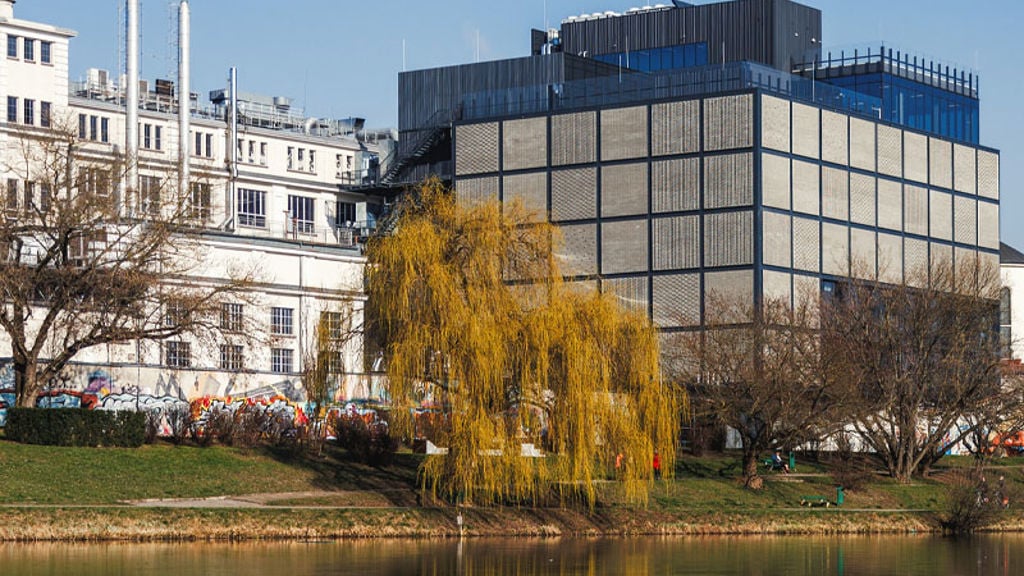What we delivered
-
Hong Kong’s most iconic landmark designed to support the development of the city’s creative economy and evolution as a global tourist destination.
-
Sophisticated engineering system with five mega-trusses to support the building above the underground Airport Express railway tunnel.
-
The building façade, embedded with LEDs, is one of the world’s biggest screens.
Get in touch with our team
Located at the southern tip of Hong Kong’s West Kowloon Cultural District, the M+ building is one of the largest museums of modern and contemporary visual culture in the world.
The 65,000m² M+ building houses 17,000 m² of exhibition space across thirty-three galleries. It also includes three cinemas, a Mediatheque, a learning hub, a research centre, museum shops, restaurants, a tea and coffee bar, a members lounge, and office spaces, with a roof garden that commands spectacular views of Victoria Harbour.
Working in collaboration with architects Herzog & de Meuron and TFP Farrells, Arup provided total design services including civil, structural, geotechnical, MEP, façade and fire engineering with lighting, acoustics, landscape, security and transportation design and consultancy.
Arup’s engineering solution shaped the centre piece of an arts and cultural hub to support the development of the Hong Kong’s creative economy and evolution as a global tourist destination.
The project provides a permanent space for M+, the first global museum of contemporary visual culture in Asia dedicated to collecting, exhibiting, and interpreting visual art, design and architecture, moving image, and Hong Kong visual culture of the twentieth- and twenty-first centuries.
The underground ‘Found Space’
The M+ building sits directly above tunnels for the MTR Airport Express and Tung Chung Line, which runs just 1.5m below ground level. The architect proposed to excavate this subterranean ‘Found Space’ as the museum’s anchoring feature. Mirroring the shape of the tunnel, it allows for large installation and future tweaks as M+ evolves.
To facilitate construction our designers needed to control the tunnel movements in accordance with strict limits set by Hong Kong’s transit and building authorities. Our solution included the use of five mega-trusses which prevent the M+ structure loading the tunnels.



Creating visual impact at the harbourfront
The eye-striking inverted T shape of M+ building is a simple design, yet its façade is something special. Its tower is covered with 140,000 pieces of ceramic tiles, many with windows in between. They are laid out in a horizontal louvre structure to provide sun shading to the museum’s interior spaces. The recesses in the louvres are embedded with LED light bars that transform the building into one of the world’s biggest screens, 65.8m high and 110m long, to display specially commissioned works of art at night.
Sustainable space for all
Above ground, much of the focus is on our sustainable design which enhances the museum’s microclimate and reduces both energy demand and operating costs – with passive and active strategies minimising use of energy, materials, water and land, and the use of ambient energy sources such as daylight, wind and solar.
Our landscape design also contributes to the surrounding lush green open spaces created by the building footprints, including a large publicly accessible podium, refreshed by the adjacent harbour breeze and irrigated through rainwater harvesting. We considered a wide range of aspects including the densely-built cityscape, the juxtaposition of water and land, the topography of the peninsula and the humid subtropical climate.
Protecting the collections
M+ hosts a collection of over 7,000 works of visual arts, along with more than 46,000 archival objects. Arup’s MEP solutions with tailored lighting and acoustics design help maintain suitable environmental conditions.
We also adopted performance-based fire engineering approach that enables the spatial planning design of the large atrium, high visitor’s density and no limitation of fire load in the building, among other fire safety elements. Apart from smoke behaviour and evacuation engineering analyses, we also designed an innovative smoke control system to suit the museum’s unique design and function with a comprehensive fire safety management plan.




Projects
Explore more arts and culture projects

Designing a creative outlet and unique venue for Bidi Bidi - transforming cultural life for Africa’s largest refugee settlement
Bidi Bidi Performing Arts Centre, Uganda

Securing the future of a 15th century building in the heart of Yorkshire
York Guildhall, United Kingdom

Advising on the transformation of 1950s silos building into a chocolate museum
E. Wedel Chocolate Factory and Museum, Poland

A space for creativity and community
The Black Library, United States of America
Get in touch with us
If you'd like to speak to one of our arts and culture experts then please get in touch by completing the form.


